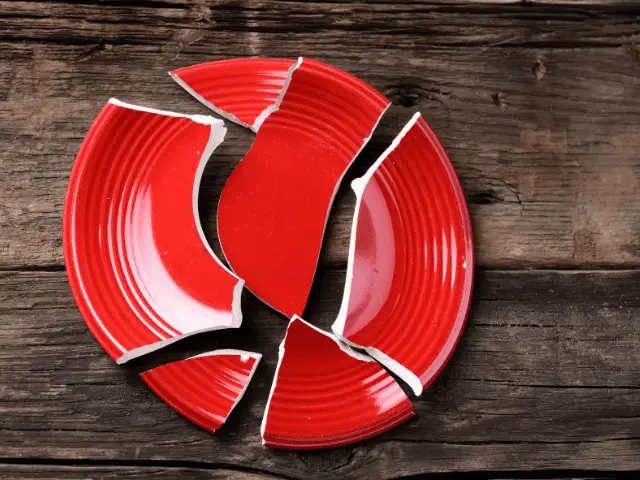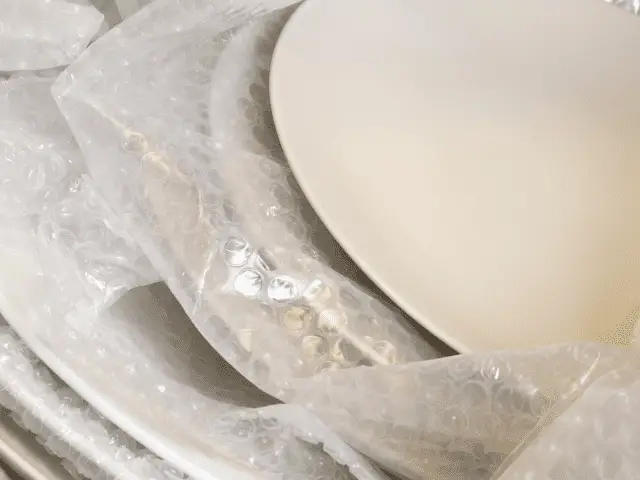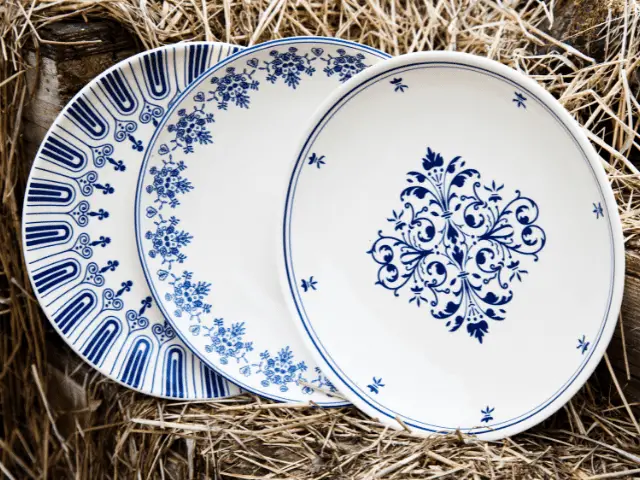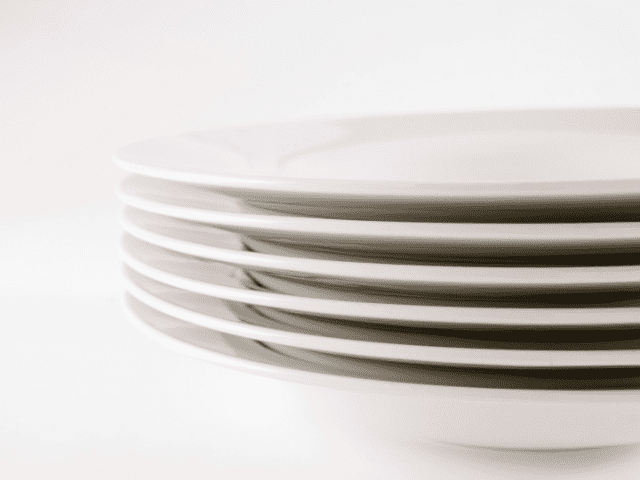It’s said that breaking plates brings good luck—at least if you’re from Greece. There was a time in the fairly recent past when Greeks broke plates on purpose—often accompanied by music and celebration. In Greece’s tavernas, you often heard the word “Opa!” shouted with joy when it happened. Having plates broken at your feet symbolized happiness and admiration.
But we don’t live in 20th-century Greece, and most of us need and often cherish our plates.
Today’s plates run the gamut from stoneware to bone china to wood to metal, plus a lot more. Some plates are harder to break than others, but those commonly used at the dinner table are often pretty fragile. So are the artist-made plates we display on walls or shelves.
So, how do you pack your plates for moving in ways that will leave them in one piece when they arrive at their destination? That’s what we’ll discuss here—having broken several plates ourselves during our many moves. So stay tuned!
Table of Contents
What Causes Plates to Break?

You should know that plate breakage during a move is not necessarily caused by how it was packed. In fact, we put a lot of stress on plates during everyday use.
Of course, there are times when a plate falls and lands unbroken on a carpet. But there’s also the microwave (which cooks at high temperatures) and the jostling of the dishwasher.
A plate’s material matters to some extent. Some, like those made of stoneware, don’t withstand the same high temperatures as well as, say, porcelain. Since porcelain liquefies during the firing process, it develops a less breakable surface—though it can still crack and chip. So some of your plates might already have hairline cracks by the time you pack them in moving boxes.
Furthermore, the “S crack,” often seen in plate breaks, as frequently happens during moving, usually starts “invisibly” during their making. Cracks are especially prominent in plates and other ceramic pieces thrown on pottery wheels.
If you know the potter who created the broken plate, let them know. They might offer you a replacement or sell you one at a discount.
How Do You Pack Plates Properly for Moving?

Plates are more challenging to pack than you might think. If you don’t do it exactly right, they could easily break.
China dishes don’t always shatter; instead, many will break into just a few pieces. This being the case, broken plates are relatively easy to repair with strong glue. But they will always be flawed and might rebreak along the original cracks.
Wrapping the Plates
We recommend wrapping each plate individually with newspaper, packing paper, or bubble wrap.
But first, you should place a cut-out circle of single-layer corrugated cardboard or heavy-duty bubble wrap across the top of the plate. Doing so adds an extra layer of shock absorption, which is especially needed with stacked plates.
Stacking the Plates
Stacking plates for packing is effective, but reinforcement helps. If you find yourself without enough padding materials at the last minute, old linens, blankets, socks, or other old clothing can do the trick. Just be sure none of them have attached buttons, snaps, etc., that might damage the plates.
Stacked plates generally are of the same size and kind. But if you’re packing ones of different sizes and materials out of necessity, proceed with caution and avoid doing this altogether if possible. The heaviest plate can go at the bottom on top of the heavy padding—but only if it’s thick and made of sturdy material.
Even then, you should place a limited number of more delicate plates (cushioned well) above. The containers on top should also be smaller in diameter and, ideally, of uniform size so that the bottommost plate will support them.
Boxing the Plates
If you’re stacking multiple plates, the box you use shouldn’t be too deep or heavy. If it weighs too much, it’s likely to be dropped or have its bottom fall out.
That’s why we like new 1½-cubic foot moving boxes (or plastic bins), roughly 16 by 12½ by 12½ inches, for this use. A container of this size can safely carry up to 60 pounds. Be sure it is packed tightly and padded all around.
Loading Boxed Plates
Before loading, tape the box securely with strong packing tape and place “Fragile” labels on every side. Needless to say, these fragile boxes should be stacked on top of others in the moving truck and surrounded by others with similarly weighted content.
How Do You Repair a Broken Plate?

There is no reason to throw a broken plate in the trash, and the only reason to keep a broken plate is if you plan to “remake” it as part of a mosaic—something relished by many hobbyists. If neither of these options fits your goal, you need to repair it.
Yes, you can restore quite a few broken ceramic plates!
According to home repair and remodeling guru Bob Vila, the best glues for repairing ceramics are cyanide-derived cyanoacrylate “super glues” (the top pick being a type of Gorilla Glue) and epoxies. The former type is somewhat easier to apply and dries quickly, but the latter is more durable and forms a stronger bond.
The choice is yours!
However, we must point out that the chemicals in many types of glue can cause skin irritation and minor stomach upset when ingested. The chemicals are generally minimally toxic in small amounts; however, the FDA does not recommend them for objects directly in contact with food or drink.
Moreover, many (not all) ceramic adhesives are either waterproof or water-resistant. If a ceramic piece has routine exposure to liquids or is kept in a moist environment, you should use waterproof glue. Some epoxies are waterproof, whereas super glues are more likely to be simply water-resistant.
Still, if your ceramic plate is something meant to hang on a wall or sit on a shelf or plate rail (if you’re fortunate enough to have one of these in your home), then any high-quality should be fine.
The Upshot
It’s obvious (though we haven’t mentioned it yet) that many plates do shatter when packed and in transit. It’s the nature of the material.
So unless all your dishware is made of something besides clay (e.g., wood, metal, or plastic), either load all your plates and other china dishes into your car or brace yourself for the impact—on your plate(s), that is.
Of course, plates are not the only dishware easily broken during a move. People often find their mugs and teacups missing their handles upon arrival, and, mindful of the famous “S break,” don’t even think about large ceramic bowls!
The moral here (at least we suppose it’s a moral) is to hand-carry your most cherished ceramic pieces and ship those you can replace should worse come to worst.


